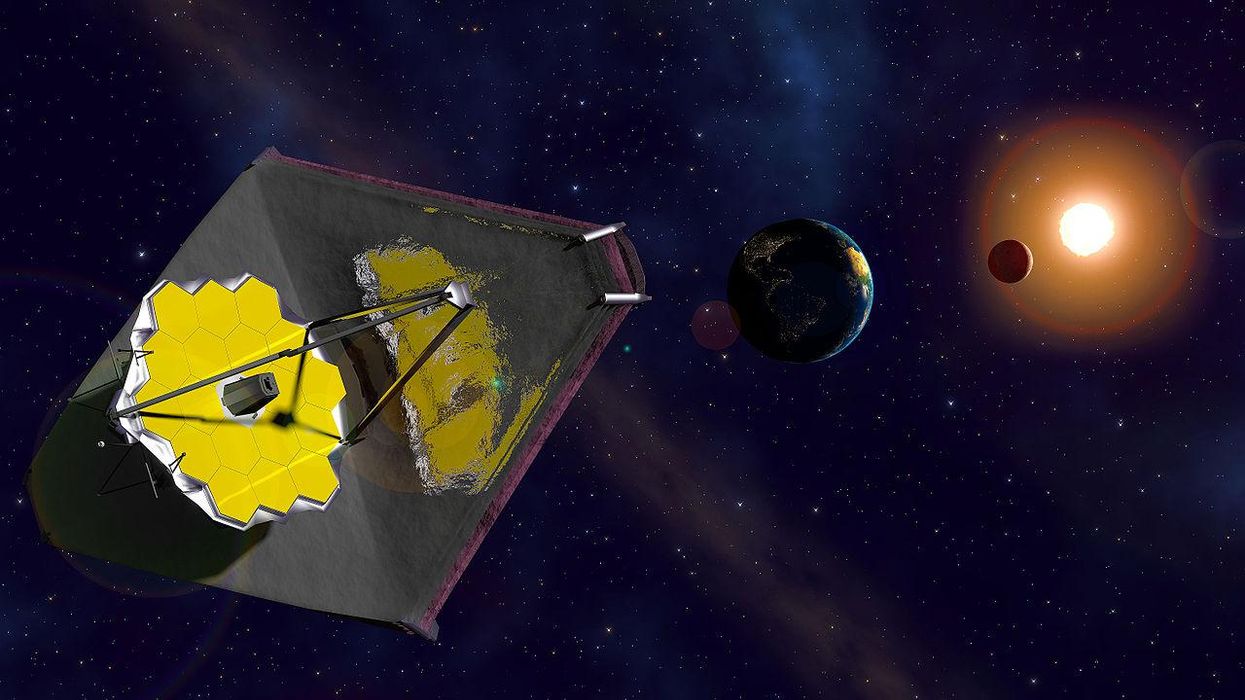Report details how a long-awaited telescope could help solve key mysteries about the universe

A 2014 depiction of the James Webb Space Telescope, Wikimedia Commons
December 27, 2021 | 04:22PM ETFrontpage videos
A development that has given astronomers reason for optimism is the completion of NASA’s James Webb Space Telescope. How well it will work, science writer Natalie Wolchover reports in a recent article for Quanta Magazine, remains to be seen. But if it works, the telescope could greatly increase understanding of far-away planets.
“Currently,” Wolchover explains, “the telescope — which has, incredibly, been built — is folded up and ready to be placed atop an Ariane 5 rocket. The rocket is scheduled for liftoff from Kourou, French Guiana…. The James Webb Space Telescope…. is 14 years behind schedule and 20 times over budget.”
According to Wolchover, the JWST underscores “the tremendous progress we’ve made in our understanding of the cosmos, not least because of Webb’s predecessors.”
"Happily, the Webb telescope will be powerful enough to probe the atmospheres and climates of other Earths — or even, if we’re very lucky, find evidence of an actual alien biosphere," she explained.
READ: West Virginia native explains why history 'will not be kind' to Joe Manchin
Scientists also hope to use the telescope to measure the expansion of the universe more precisely, which could help solve persistent mysteries the bedevil experts, according to Wolchover. It should also be able to peer further back into the history of the early galaxies than we've ever seen before. Unlike the famous Hubble Space Telescope, the new device will have the technology to better help astronomers infer the chemical compositions of the centers of galaxies, which are currently perplexing.
"Other researchers want to understand the first stars," the report explained. "Some think Webb will see so-called 'Population III stars,' primordial beasts that are hypothesized to have been roughly 10,000 times heavier than our sun. Such stars would help solve another major mystery of galaxy formation: how galaxies’ centers ended up with supermassive black holes — physically small yet incredibly powerful gravitational sinkholes that can weigh billions of times the mass of our sun. Nobody knows how supermassive black holes grew so heavy, or when, or why their properties are correlated with properties of their host galaxies."
James Webb Space Telescope Launch — Official NASA Broadcastwww.youtube.com